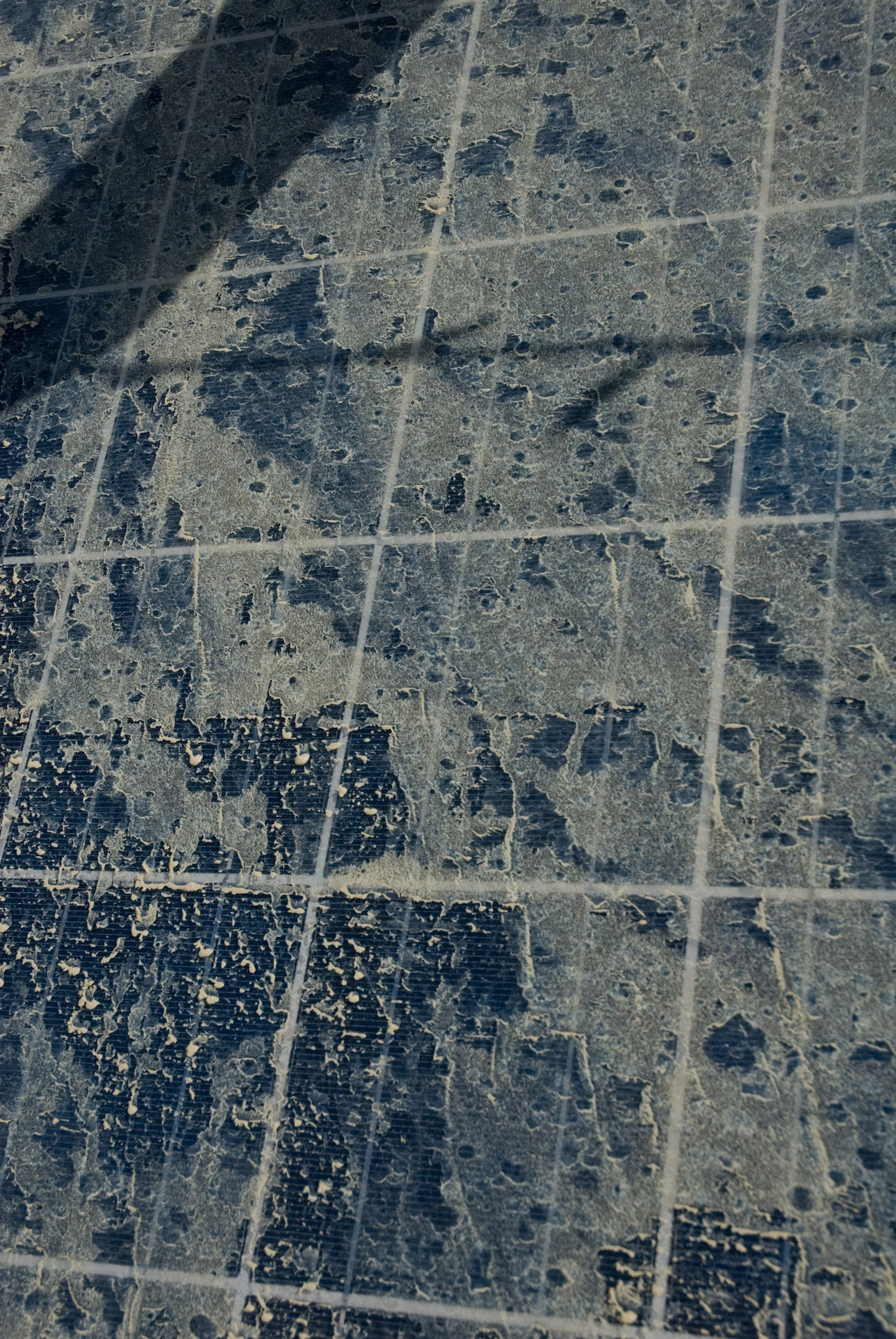- Solar energy blog
- How to clean solar panels: 5 tried and tested ways
How to clean solar panels: 5 tried and tested ways


Laura Rodríguez
Territory Manager Oceania & Nordics
Laura is a renewable and software industry sales professional, currently working at RatedPower as Territory Manager Oceania & Nordics. With a background in International Business and International Trade, Laura previously worked in the business strategy area in various companies as well as as a market analyst for the Government of Spain in Australia.

Solar photovoltaic (PV) panels require minimal maintenance once they are installed, and are designed to operate for 25-30 years. But it’s still important to keep them clean to continue achieving optimal power generation.
Accumulated dust and dirt on solar panels can result in —soiling— energy losses of up to 7% annually in parts of the US and as much as 50% in the Middle East. So, how should solar panels be treated to remove soiling?
Let’s look at the most effective methods for keeping PV panels clean and a few factors that affect solar panel cleaning and maintenance.
Download the Minimize your shading losses with RatedPower eBook to delve into different types of shading, and what you can do to minimize the shading losses of your next PV installation.
How to clean solar panels
There are several ways to keep solar panels clean, from manual washing to fully automated technologies. While rainwater can remove some of the grime that collects on panels over time, it can also cause dirt to accumulate at the bottom of the panels, and it isn’t sufficient to remove heavy pollution.
Robotics
Robotics technology is enabling companies like Italy-based Washpanel to produce automatic and semi-automatic robots specifically designed for solar panel cleaning. It provides portable semi-automatic robots for panels installed on places such as carports, greenhouses, and shed roofs. And it offers fixed roof robots for large installations in dusty environments that require regular cleaning.
In the Middle East, Ecoppia deploys solar-powered autonomous robots to clean PV panels nightly using soft microfiber and airflow rather than water, as high-pressure washing can damage the panels. The robots also clean their own on-board solar panels and recharge their batteries quickly between operations.

Soap-less brushes and sponges
Solar maintenance companies like US-based Bland Company and Premier Solar Cleaning have found that using deionized water with a rolling or vehicle-mounted brush allows them to clean panels without using soap, which leaves a residue that not only shades panels but attracts dirt.
Lubricant manufacturer Polywater produces a Solar Panel Wash to help water lift off grime without leaving a film behind. SunSystem Technology uses a blend of diluted vinegar and hydrogen peroxide to remove dirt.
And, homeowners can wash their solar panels manually using a garden hose and a soft sponge without cleaning agents.

Waterless vibration
Scientists at Heriot-Watt University in Scotland and in a project funded by NASA in the US have developed ways to cause solar panels to vibrate to shake surface dust loose. The Heriot-Watt solution attaches a direct-current (DC) motor to the back of a panel that can be tuned to induce vertical vibrations.
Nanoparticle coatings
Scientists at the International Advanced Research Centre for Powder Metallurgy and New Materials (ARCI) unit of India’s Department of Science and Technology have developed a solar panel coating to prevent dirt from accumulating in harsh environments. In India, PV panel efficiency is affected by a combination of high temperatures, high humidity, and high pollution.
The nanoparticle-based technology repels dust so that it is easily washed off with water and is highly transparent, so that the coating does not reduce panel efficiency. India’s Marichin Technologies is producing the coating for commercial adoption.
Manual cleaning work
Manually cleaning the PV panels is a good old-fashioned way! Robots, waterless vibration or special coating solutions are innovative and efficient, however, there are many scenarios where these types of solutions can be quite expensive and inefficient. This applies specially for small installations, residential or commercial scale, as well as special structures and installations such as agrivoltaics.
To properly carry out the task, there are some instruments that will help a lot when cleaning solar panels. On the one hand, there are many special brushes that rotate while brushing the soil from the panel. Also, any basic cleaning instrument such as the ones used on car windshields could also help us out.
On the other hand, using water pressure machines such as the Karcher High Pressure Washer would allow us to complete the task much quicker while saving lots of water.
How location affects solar panel cleaning
Where solar panels are located also has a bearing on how to clean solar panels and how often they need to be cleaned to remain efficient.
As a general rule, they should be cleaned at least once or twice a year. But in some locations, they may benefit from more frequent cleaning.
Polluted areas. PV panels installed in areas with high levels of pollution, especially near factories, highways, or airports, will experience high levels of atmospheric grime and oil buildup.
Wooded areas. Installations with many trees nearby are likely to have more leaves drop on the panels, obstructing the absorption of sunlight. Trees also attract birds that could result in an accumulation of droppings that obscure the PV cells and damage the surface due to acidity, reducing efficiency.
Deserts. Regions such as the Middle East and US Southwest with dry and dusty climates see larger accumulations of sand on PV panels that block light and scratch the surface. In areas like California or Australia, ash from wildfires can quickly fall on panels in large clumps.

In addition, the angle of the rooftop where PV panels are installed has a bearing on how often they need to be cleaned. Panels that are installed at an angle receive more cleaning from rainwater runoff than flat-mounted panels, where water can collect in pools and leave behind a residue.
The larger the size of the installation, the more electricity generation is obstructed when panels are dirty, so large commercial solar sites require cleaning more often than residential systems. As a result, robotic solutions are more suitable for commercial systems.
How to gauge when it’s time to clean solar panels
The most obvious way to tell when solar panels need cleaning is when the efficiency of the system begins to decline.
Pollution is typically higher during the winter when cold air traps pollutants closer to the ground than the warmer air of summer. That means spring is the best time of year to clean solar panels, as they become too hot to touch during the summer. The best time of day to clean them is in the morning or early evening when they are cooler.

There are companies working on ways to use advanced technology to monitor the condition of solar panels and remove some of the guesswork.
Researchers in Spain have received a patent for a solution that attaches a sensor to the glass surface of a panel and uses an LED light to measure the amount of dirt that has built up. The US National Renewable Energy Laboratory (NREL) is also developing a way to monitor the amount of electricity panels produce every day to detect when soiling has begun to degrade output.
Ecoppia’s cloud-based platform uses sensors and machine learning to monitor a solar PV system, collect weather data, and travel across trackers to clean panels on an optimized schedule.
If you want to know more about how a dirty solar panel affects the energy yield of a solar energy system and how to avoid it, check out our posts about shading losses and soiling losses.
2025 Trends: Renewable Energy & Solar Research Report
Get key insights and data from an industry-wide survey and solar simulations on the RatedPower platform. Download now to uncover critical trends and challenges shaping the future of renewables.

Latest stories
Related posts
Technology and engineering
Outsmarting congestion: How efficient solar design helps navigate Nordic grid limits
Learn how Nordic operators and solar developers are adjusting to tighter grid conditions and how policy and design decisions are keeping projects on track.
Updated 16 DEC, 25

Technology and engineering
The rise of ultra-thin perovskite solar cells
Learn about Japan’s $1.5B initiative to commercialize ultra-thin, flexible perovskite solar cells and how it could transform the solar landscape globally.
Updated 30 SEP, 25

Technology and engineering
The green hydrogen boom in LatAm
Latin America is emerging as a green hydrogen leader. Learn how LatAm countries are leveraging solar and wind power to drive green hydrogen production.
Updated 22 JUL, 25

- RatedPower
- Solar energy blog
- How to clean solar panels: 5 tried and tested ways
 Watch a demo
Watch a demo Ask our AI Product Expert
Ask our AI Product Expert
